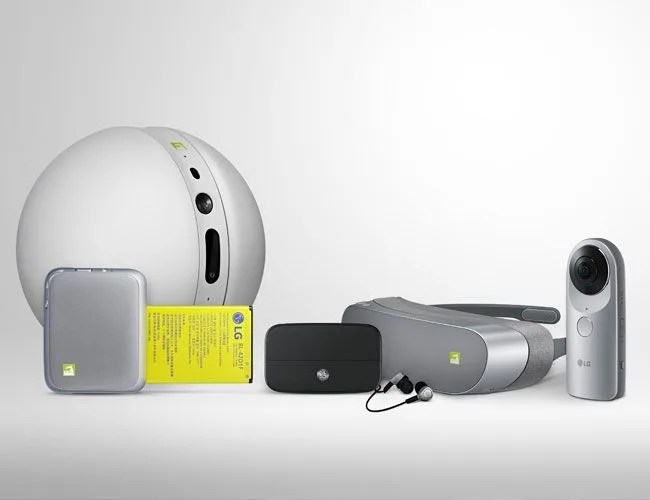In an age where smartphone advancements have become predictable (think better screens, processors and cameras) LG has done something completely unique by introducing its first modular smartphone. While it’s nowhere near as ambitious as Google’s Project Ara, the bold maneuver does inch us closer to a world in which we fully embrace smartphones as core computing devices, capable of meeting all of our technological needs when augmented with the right hardware.
Specifically, the new aluminum-clad G5, which in itself is a major improvement in build quality and design for the Korean tech giant, is designed to work with several modules (dubbed “friends,” in the company’s vernacular) that significantly expand the phone’s functionality, attaching via a swappable bottom unit.
The two most popular modules announced at launch, other than the removable battery, will undoubtedly be the LG Cam Plus and LG Hi-Fi Plus modules. The camera module adds a more ergonomic grip to the device along with physical controls for the phone’s shutter, video and zoom functionalities and 6 to 8 hours of extra battery life. The Hi-Fi Plus module, designed in partnership with Bang & Olufsen, includes a 32-bit DAC complete with native DSD audio playback and support for audio upsampling, possibly making the G5 the most audiophile-friendly smartphone on the market to date. Match it with a pair of H3 B&O Play earphones to round out the superior listening experience.

There’s also plenty to like about the basic G5 even if its modular design falls flat. Its 5.3-inch, 2560 x 1440-pixel screen strikes a nice compromise in the age of phablets, while a fingerprint scanner, Qualcomm’s latest Snapdragon 820 chipset and 4GB of RAM match what’s found on other elite devices. Imaging-wise, the G5 upholds the excellent photography precedent set by the G4 by pairing a standard 16MP shooter with another 8MP, 135-degree wide-angle option. Either can be used separately or combined in interesting ways to create new kinds of shots.
Cost will ultimately play a huge role in the success or failure of this modular approach, and for now, LG hasn’t shared any of those details beyond an April release date. However, if the strategy is a success, more “friends” designed to work seamlessly with the G5 will come in the future, further expanding the device’s capabilities as the center of your gadget universe.
Beyond this practical issue, LG’s device also faces the same dilemma as Nextbit’s Robin, a cloud-storage-first smartphone. Mainly: are we truly ready for a new approach to smartphones, or is this just another device that’s too ahead of its time?
